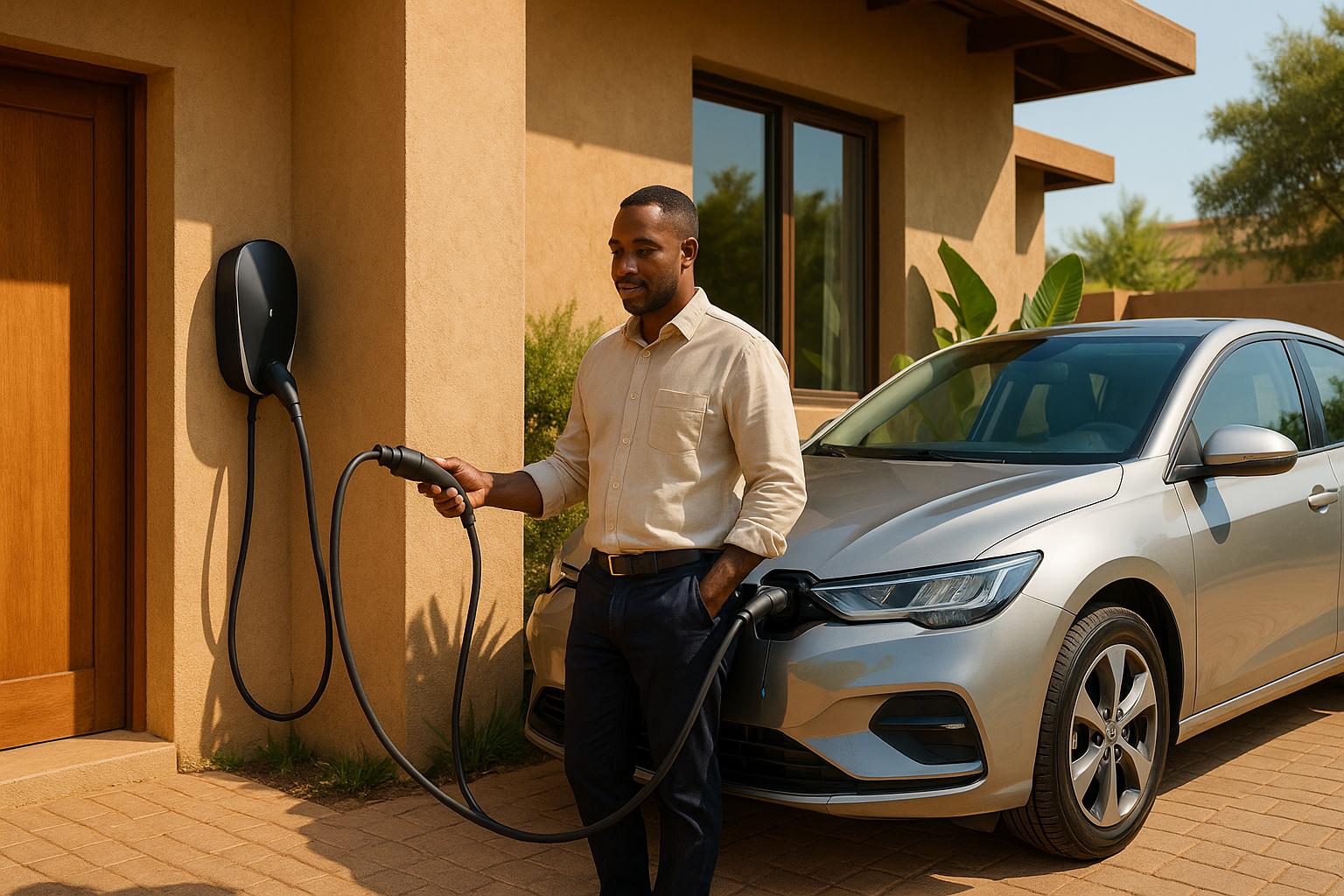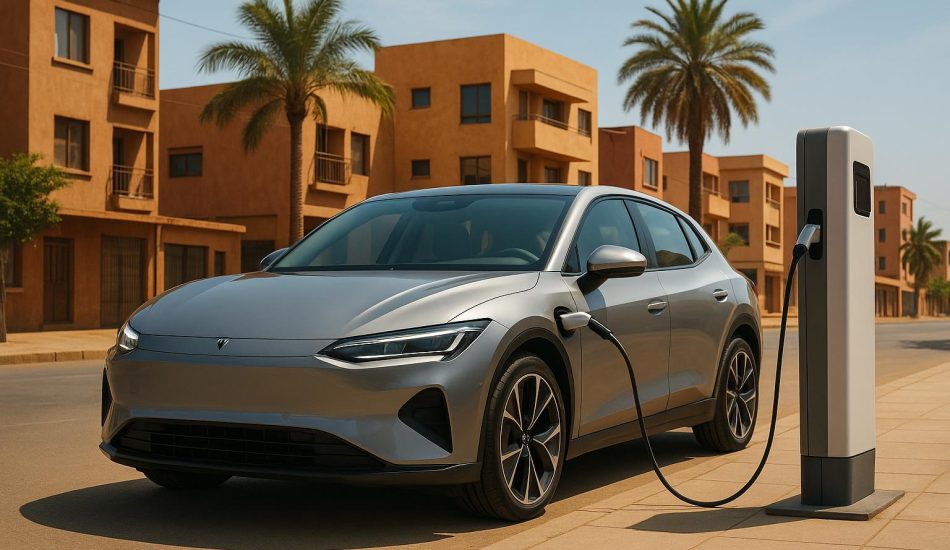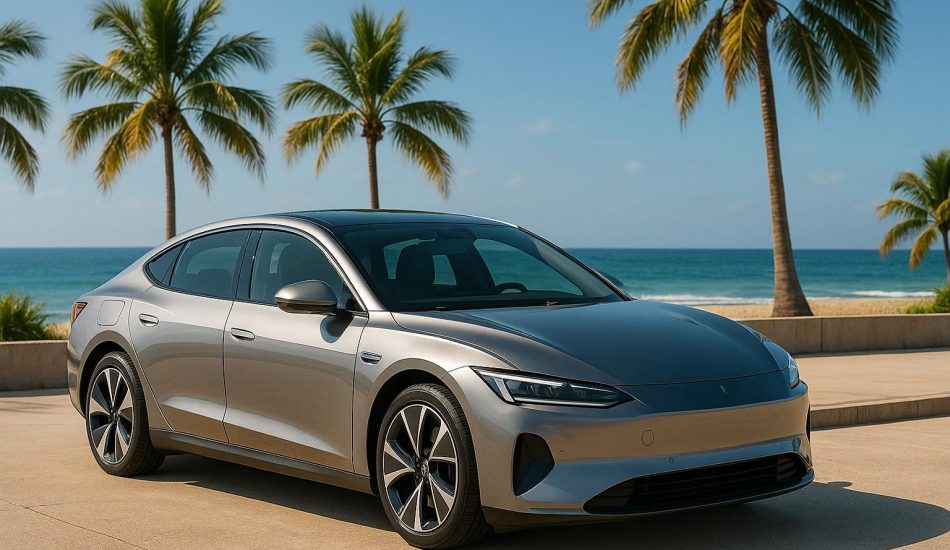
Want to charge your electric car at home in Africa? Here’s what you need to know:
-
Choose the Right Charger:
- Level 1 (120V): Slow, adds 2–5 miles per hour. Best for short commutes.
- Level 2 (240V): Faster, adds 40–65 miles per hour. Ideal for daily use.
- Level 3 (DC Fast): Not suitable for home use.
-
Plan for Power Challenges:
- Load Shedding: Charge during stable hours.
- Peak Costs: Save by charging during off-peak hours.
-
Installation Basics:
- Use a 40-amp circuit for Level 2 chargers.
- Install near your electrical panel to save on wiring costs.
- Budget $800–$4,000 for setup.
-
Cost-Saving Tips:
- Home charging costs: $0.16–$0.22 per kWh.
- Public charging: $0.37–$0.40 per kWh.
-
Backup Power Options:
- Use portable power stations or solar panels for reliability during outages.
Quick Comparison Table:
| Charging Level | Speed (Miles/Hour) | Cost | Best Use Case |
|---|---|---|---|
| Level 1 | 2–5 | Low | Short commutes |
| Level 2 | 40–65 | Medium | Daily home charging |
| Level 3 | Not for home use | High | Public charging only |
Pro Tip: Regular maintenance and smart charging can save up to 40% on costs while ensuring safety and efficiency. Ready to set up your EV home charger? Keep reading for a detailed guide!
We visit South Africa’s first completely off-grid EV charging …
Home Charging Fundamentals
A properly set up home charging station ensures your vehicle is ready to meet your daily driving needs. Here’s a breakdown of the essentials for creating an efficient home charging setup.
Types of Home Chargers
| Charging Level | Power Supply | Charging Speed | Best Use Case |
|---|---|---|---|
| Level 1 (120V) | Standard outlet | 2–5 miles per hour | Overnight charging for short commutes |
| Level 2 (240V) | Dedicated circuit | 40–65 miles per hour | Daily home charging |
| Level 3 (DC Fast) | Industrial power | Not suitable for home use | Public charging stations |
For most homes, Level 2 chargers are the go-to choice. These chargers can add 40–65 miles of range per hour, making them ideal for regular daily use.
Required Charging Equipment
To set up a home charging station, you’ll need the following:
- Electric Vehicle Supply Equipment (EVSE): The main charging unit
- Circuit Breaker: A dedicated 40-amp breaker for Level 2 charging
- Charging Cable: Can be tethered (permanently attached) or untethered (removable)
For basic charging, the cord that comes with your vehicle can be used with a high-quality outlet. However, for higher-powered setups, professionals often recommend hard-wiring the charging unit to a junction box for better reliability. Installation costs vary widely, typically ranging from $800 to $4,000, depending on your electrical system and chosen equipment.
Power Grid Requirements
Your local power infrastructure plays a big role in home charging. Research shows that unmanaged home charging can increase daily peak electricity demand by 24% in areas where just 5% of households own electric vehicles.
Here’s what you’ll need to ensure a reliable setup:
| Requirement | Specification | Purpose |
|---|---|---|
| Service Panel Capacity | 200-amp minimum | Supports Level 2 charging |
| Dedicated Circuit | 40-amp circuit | Prevents overload |
| Smart Charging | Time-of-use enabled | Reduces peak demand |
Using smart charging can lower costs by up to 40% while helping to protect the local power grid. It’s important to consult a licensed electrician to evaluate your home’s electrical capacity and determine if upgrades are needed. Also, keep in mind that the Type 2 plug is the standard AC charging connector in many African countries, aligning with European Union standards. This compatibility ensures efficient and safe charging while integrating seamlessly with local infrastructure.
Home Charger Installation Steps
Installation Instructions
To set up your home charging station, start by evaluating your electrical capacity and picking the best spot for the charger. Most Level 2 chargers need a 240-volt supply and a dedicated circuit. The charging speed directly depends on the circuit’s capacity:
| Circuit Capacity | Charging Speed (miles added per hour) |
|---|---|
| 20-amp circuit | 12 |
| 30-amp circuit | 18 |
| 40-amp circuit | 23 |
| 50-amp circuit | 29 |
Choose a location close to your electrical panel to keep wiring simple and ensure the area has enough cable reach, easy vehicle access, and weather protection if outdoors.
Once installed, make sure your setup meets safety standards and stays compliant with local regulations.
Safety Requirements
Safety should always be a priority when setting up a home charging station. Keep these key points in mind:
- Weatherproofing: If you’re installing the charger outdoors, ensure it’s well-protected against rain, dust, and other environmental factors.
- Circuit Protection: Use appropriate circuit breakers and surge protectors to safeguard the system.
- Routine Maintenance: Regularly inspect the charger and its components for signs of wear or damage.
"Home charging stations are very safe when properly installed and used according to the manufacturer’s instructions." – Autel Energy
Cost-Saving Setup Methods
-
Check your electrical panel’s capacity
Assess your current panel to see if it can handle the charger or if an upgrade is necessary. This step can prevent unnecessary expenses later. -
Install the charger close to the electrical panel
A shorter distance means lower wiring costs and a simpler installation process. -
Plan for future needs
Use wiring that supports higher amperage than your current setup requires. This small upfront investment can save you from costly upgrades as your charging needs grow.
sbb-itb-99e19e3
Power Management Tips
Make the most of your home charging setup by cutting power costs and staying prepared for Africa’s unique energy challenges.
Reducing Power Costs
Charging at home is much cheaper than using public charging stations. Home charging costs range from R3–R4 per kWh, while public charging rates are around R7.00–R7.50 per kWh. Using smart charging can reduce these costs by up to 40%.
To save even more, schedule your charging during off-peak hours when electricity is cheaper. Many utilities use an Incline Block Tariff system, meaning the more electricity you use in a month, the higher the rate you pay.
| Vehicle Model | Home Charging Cost | Public DC Charging Cost |
|---|---|---|
| Mini Cooper SE | R116 | R240+ |
| Audi e-tron | R315 | R660+ |
For added reliability, consider investing in backup power solutions.
Backup Power Options
Backup power systems are essential for uninterrupted EV charging, especially with frequent power outages or load-shedding.
Portable Power Stations
Portable power stations like the EcoFlow DELTA series are a reliable option. The DELTA Pro model offers a capacity range of 3.6 kWh to 25 kWh and a 3600W output, making it suitable for charging your EV during outages. For smaller needs, the EcoFlow RIVER 2 series starts at just R3,599.00.
Solar Integration
Adding a solar PV system can be a game-changer. Charging your EV with solar power during the day can eliminate charging costs entirely. This option is especially useful during extended outages or load-shedding.
Charger Care Guide
Keeping your charger in good condition ensures it works efficiently and lasts longer. Here’s how to maintain it:
Daily Checks
- Look for any damage to cables.
- Use a dry Q-tip to clean charging ports.
- Store cables properly to avoid wear and tear.
Monthly Maintenance
- Inspect for loose connections.
- Clean the exterior of the charging station.
- Update the charger’s software to ensure optimal performance.
"If you do notice anything wrong with your charger, do not attempt to fix it yourself or open the charger as this could invalidate your warranty or put your safety at risk. Inform the provider or have it inspected by a qualified electrician." – Pod Point
Cost-Effective Charging Methods
When setting up a home charging solution, it’s important to weigh upfront costs against long-term efficiency.
Charging Method Comparison
Here’s a quick look at how different charging methods stack up in terms of cost, speed, and suitability:
| Charging Method | Initial Cost | Charging Speed | Best For |
|---|---|---|---|
| Standard Outlet (Level 1) | Lower cost | Slower charging | Overnight charging and shorter commutes |
| Basic Level 2 Station | Moderate cost | Faster charging | Daily commuting and regular use |
| Smart Level 2 Station | Higher cost | Fast charging with scheduling | Heavy usage |
This comparison helps you decide which option works best for your needs and local power setup.
Local Charging Solutions
Beyond choosing a charging method, tailoring your setup to local conditions can make charging more efficient and cost-effective:
-
Hybrid Power Systems
Combine grid electricity with solar panels to reduce energy costs and ensure reliable charging. -
Smart Load Management
Use a system that automatically adjusts charging speeds to avoid overloading your home’s electrical capacity. -
Voltage Stabilization
If you live in an area with power fluctuations, a voltage stabilizer can protect your vehicle and charging equipment from damage.
These solutions can be integrated into your overall home charging plan for better performance.
EV24.africa Support Services

EV24.africa offers services to make setting up a home charging system easier:
-
Vehicle Selection Assistance
Get detailed specifications for EV models from brands like Tesla, BYD, and Volkswagen, ensuring compatibility with local charging setups. -
Installation Guidance
Experts assess your electrical system and recommend charging solutions that fit your needs and budget. -
Flexible Payment Options
Spread out the cost of vehicles and charging equipment with tailored payment plans.
With EV24.africa’s support, you can optimize your home charging setup for both convenience and cost savings.
Conclusion
Setting up a dependable EV home charging system in Africa starts with understanding your local power grid and picking the right equipment. These steps build on the basics and installation process discussed earlier.
To ensure success, focus on three key areas: evaluate your grid and backup power options, select safe and compatible charging equipment, and schedule regular maintenance with professional assistance. This approach helps avoid common problems and keeps your system running smoothly for the long term.
For expert help with your EV home charging needs, check out EV24.africa. They offer valuable insights into African markets, transparent pricing, detailed vehicle listings, and support for building the necessary infrastructure.
FAQs
What challenges might you face when charging an electric car at home in Africa, and how can you overcome them?
Charging an electric car at home in Africa can come with a few challenges, such as unreliable electricity supply and limited infrastructure tailored for electric vehicles. Power outages or inconsistent voltage can make it difficult to charge your car reliably.
To address these issues, consider installing a home charging station with features like voltage regulation and surge protection to safeguard your vehicle. Pairing this with a backup power source, such as solar panels or a home battery system, can provide a more consistent and sustainable charging solution. Additionally, working with certified professionals for installation ensures compatibility with local grids and optimizes energy usage for efficiency and cost savings.
By planning ahead and investing in the right equipment, you can enjoy convenient and reliable home charging, even in regions with electricity challenges.
How can I check if my home’s electrical system can handle a Level 2 EV charger?
To see if your home’s electrical system can support a Level 2 EV charger, start by checking your electrical panel’s capacity. Most older homes are equipped with 100-amp panels, while newer homes often have 200-amp panels. A Level 2 charger typically requires a dedicated 240-volt circuit, so you’ll need to ensure your panel has enough available capacity and space for a new double-pole breaker.
For an accurate assessment, it’s best to consult a licensed electrician. They can inspect your system, determine if any upgrades are needed – such as increasing panel capacity or installing additional circuits – and ensure your setup is safe and compliant with local codes. This step is crucial to avoid overloading your system and to ensure reliable charging at home.
What are the advantages of using solar power to charge my electric car at home, and is it practical in Africa?
Using solar power to charge your electric vehicle (EV) at home has several key advantages. It allows you to reduce your dependence on the electricity grid, lower your energy costs, and power your EV with clean, renewable energy. Over time, this can save you money while also minimizing your environmental impact.
In Africa, solar power is especially practical due to the region’s abundant sunlight. However, the feasibility depends on factors such as the upfront cost of solar panels, installation availability, and your home’s energy needs. With the right setup, solar charging can be a reliable and cost-effective solution tailored to the local climate and conditions.




